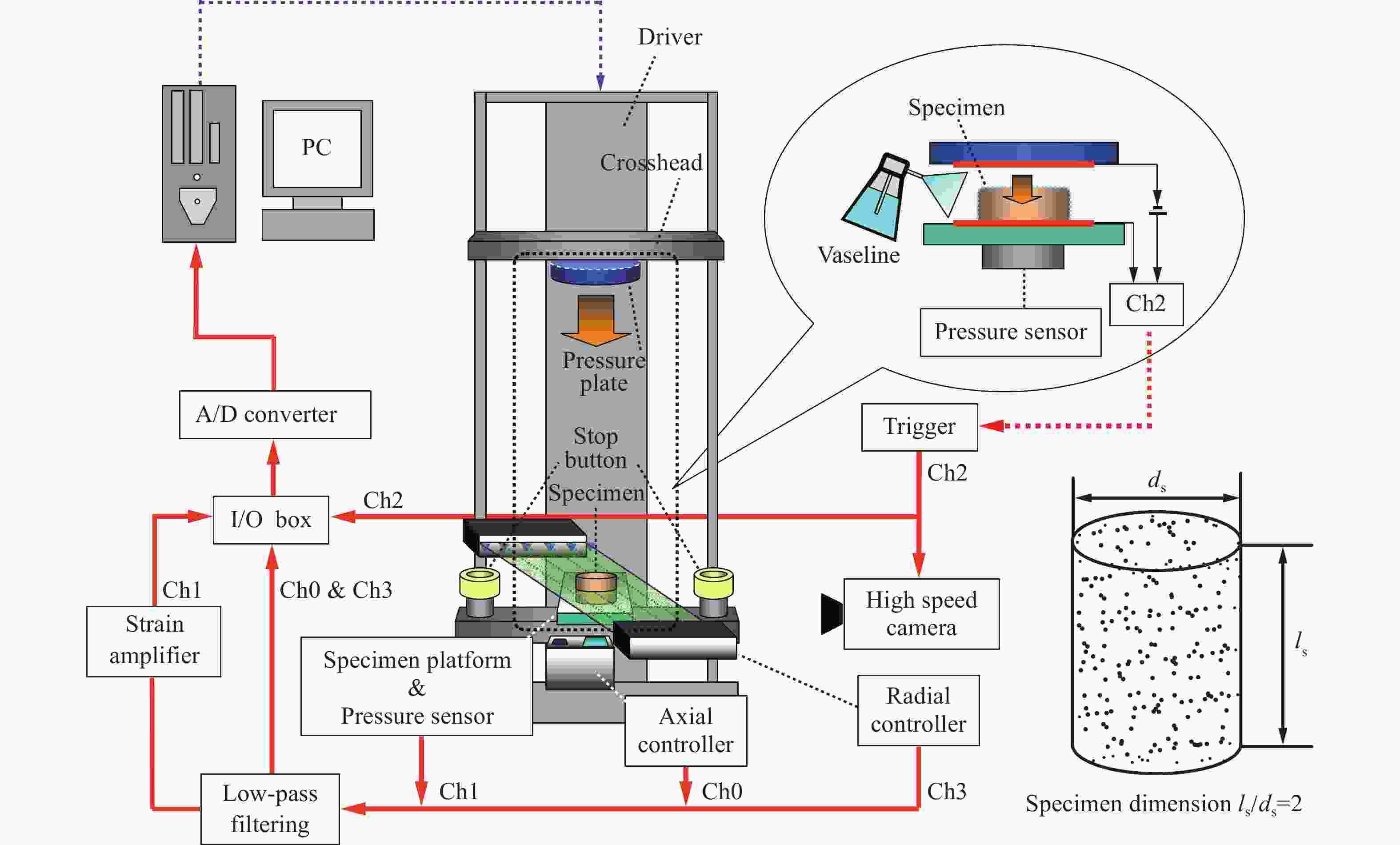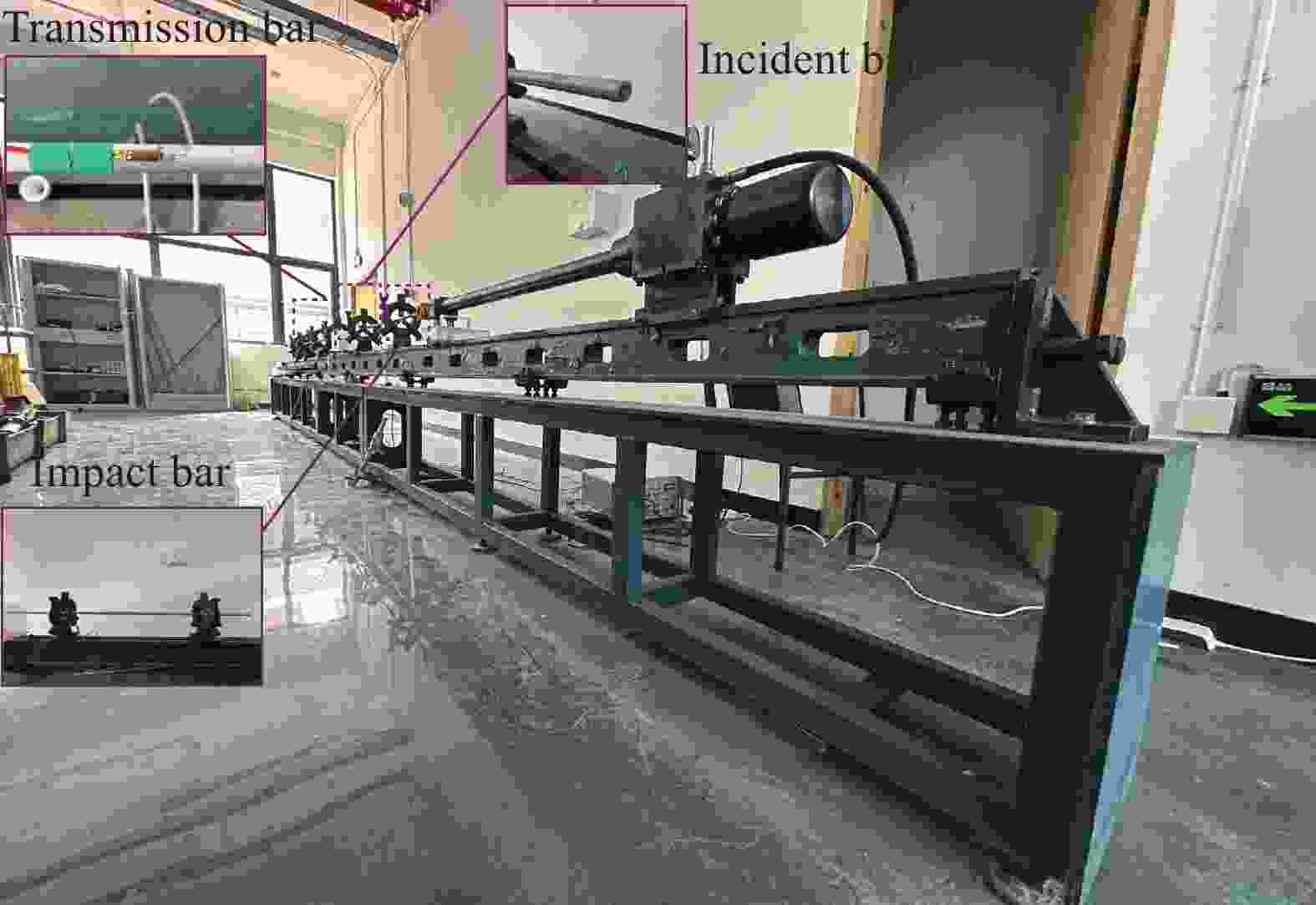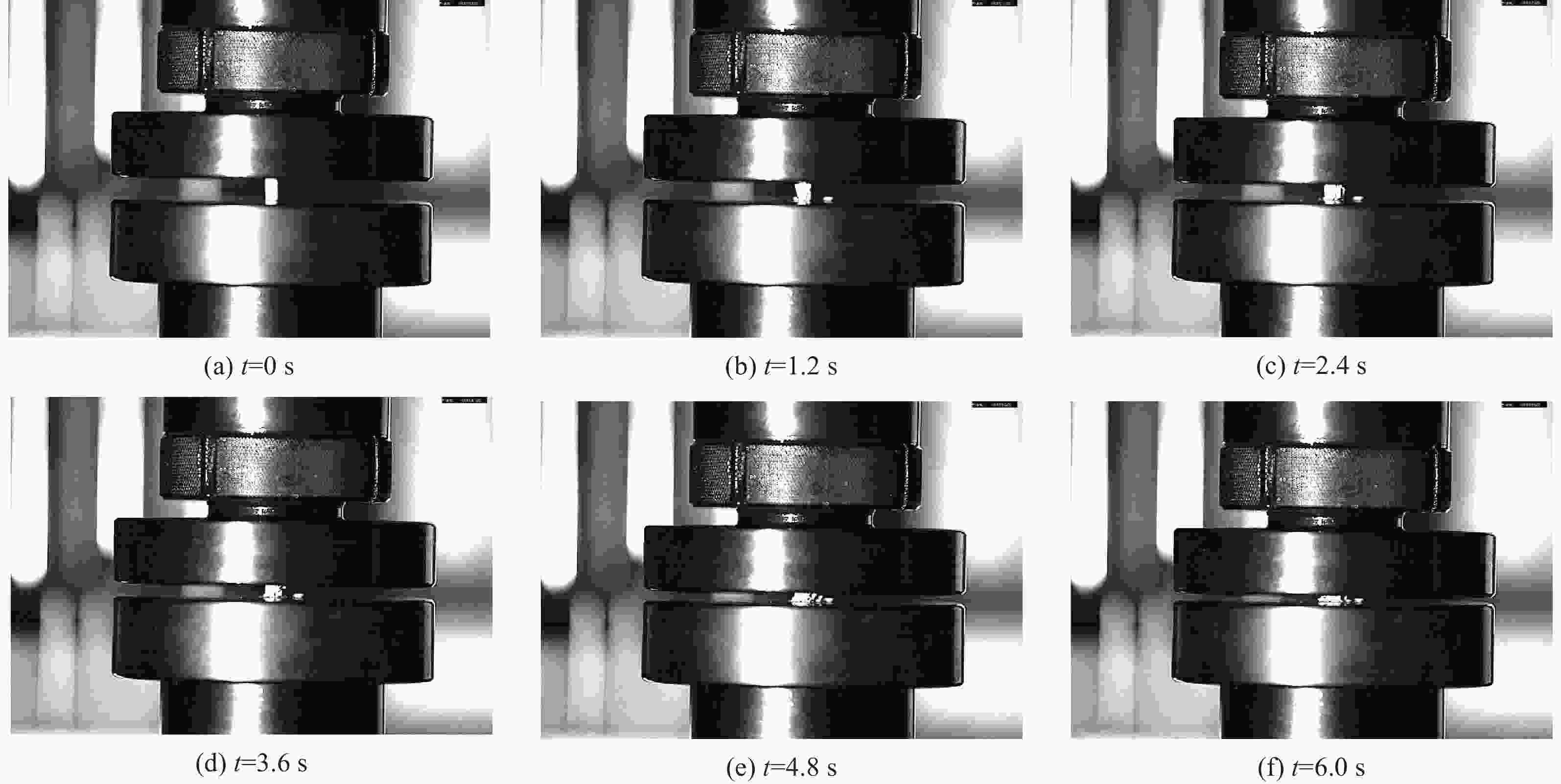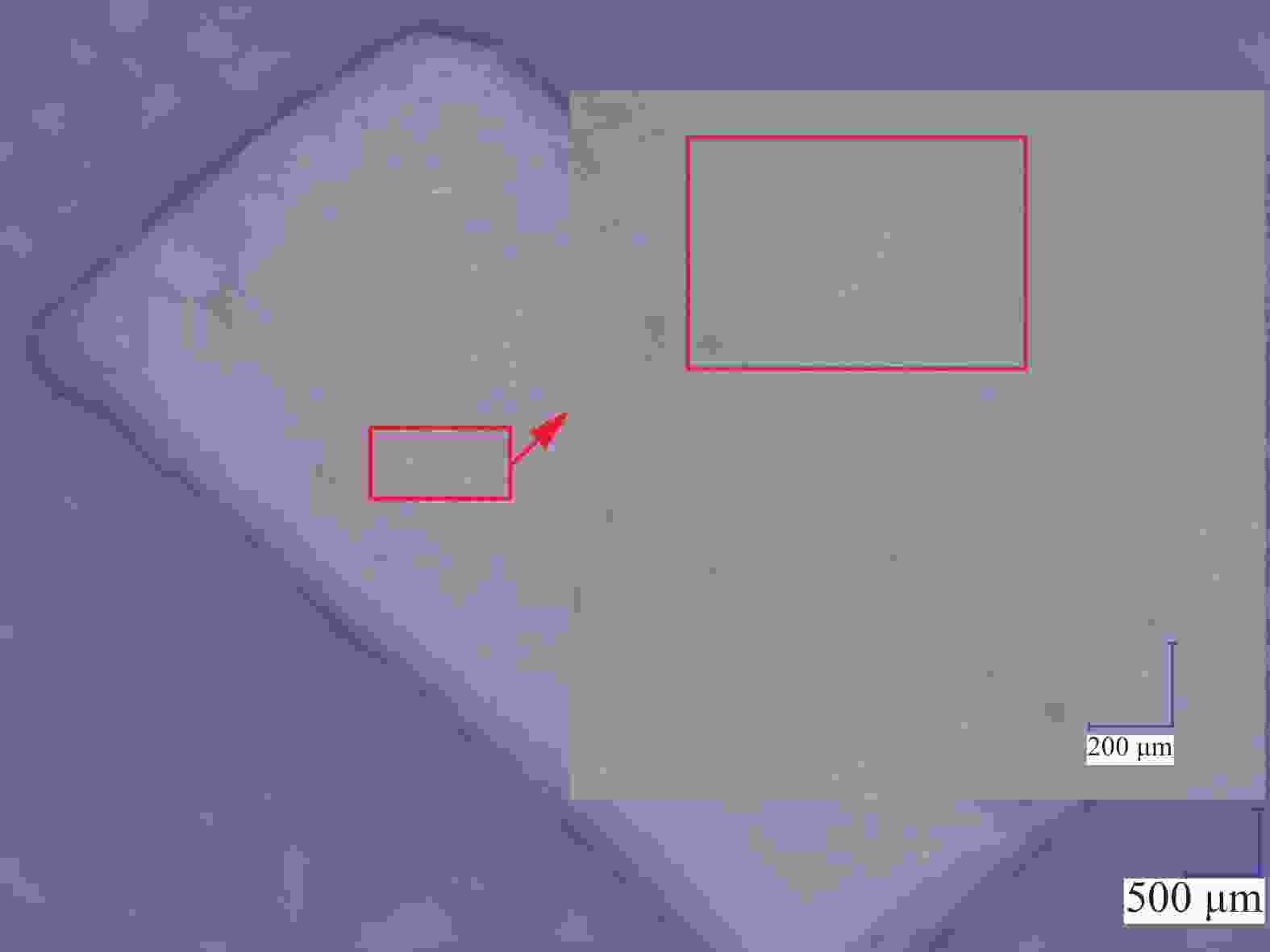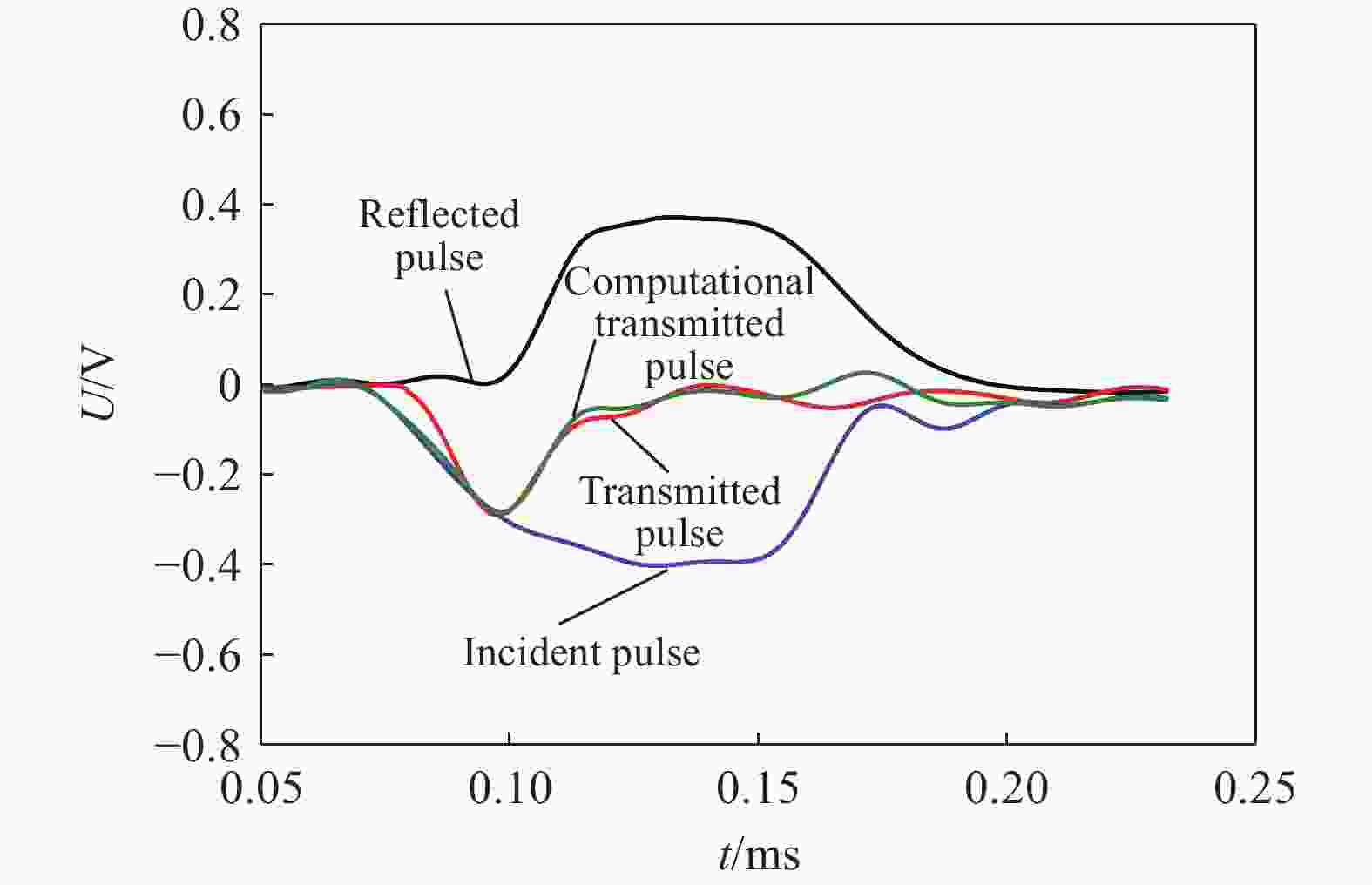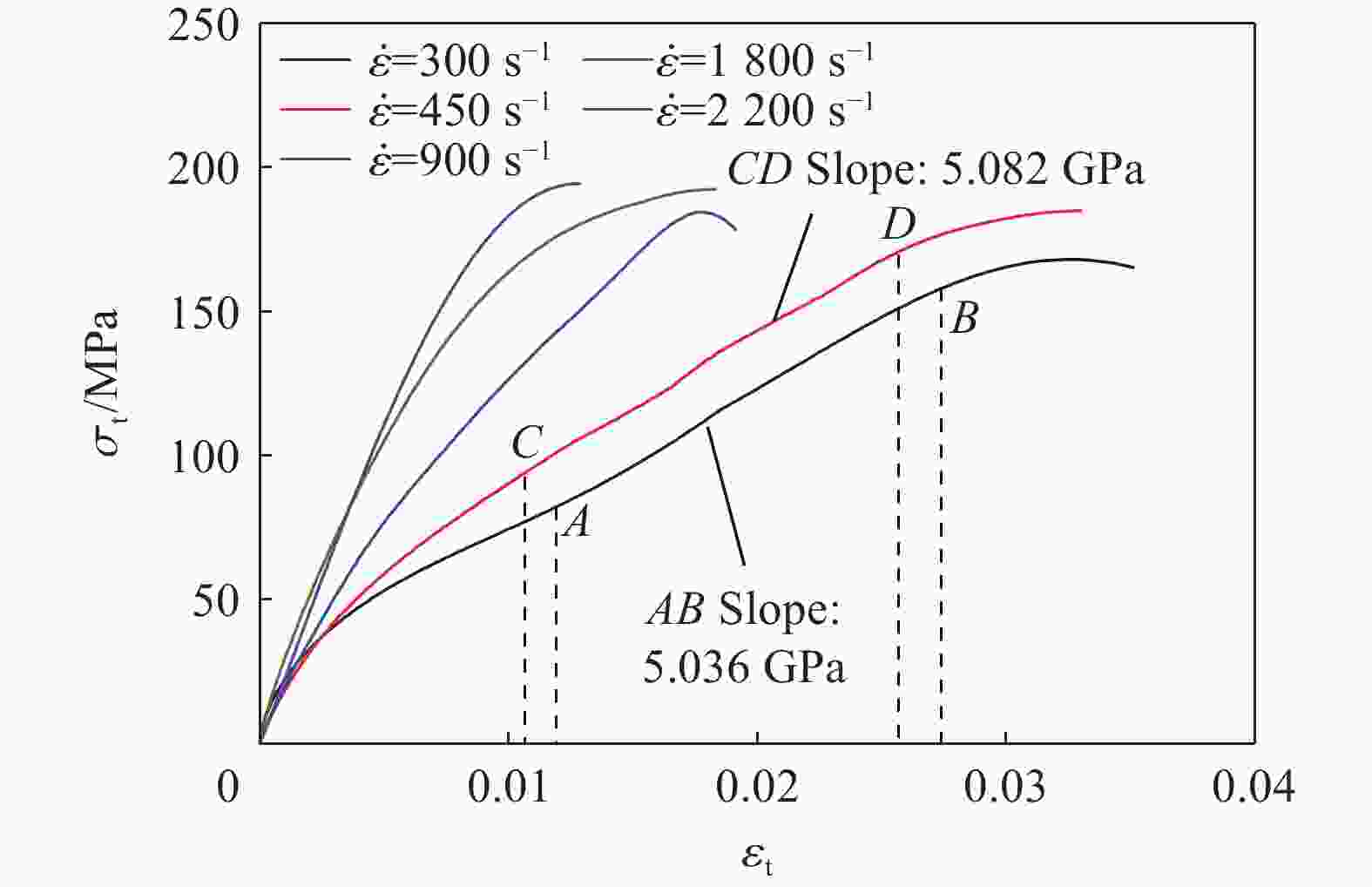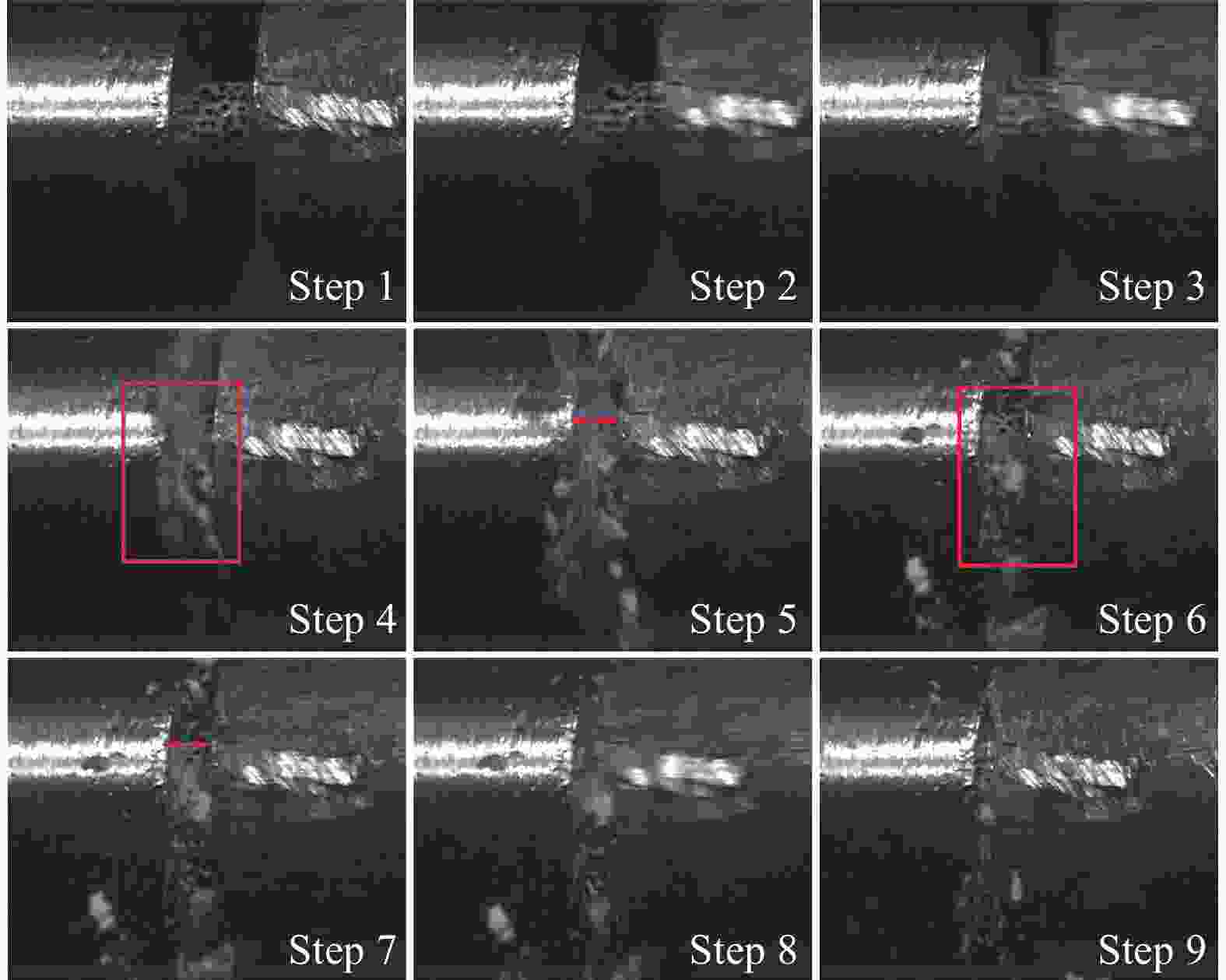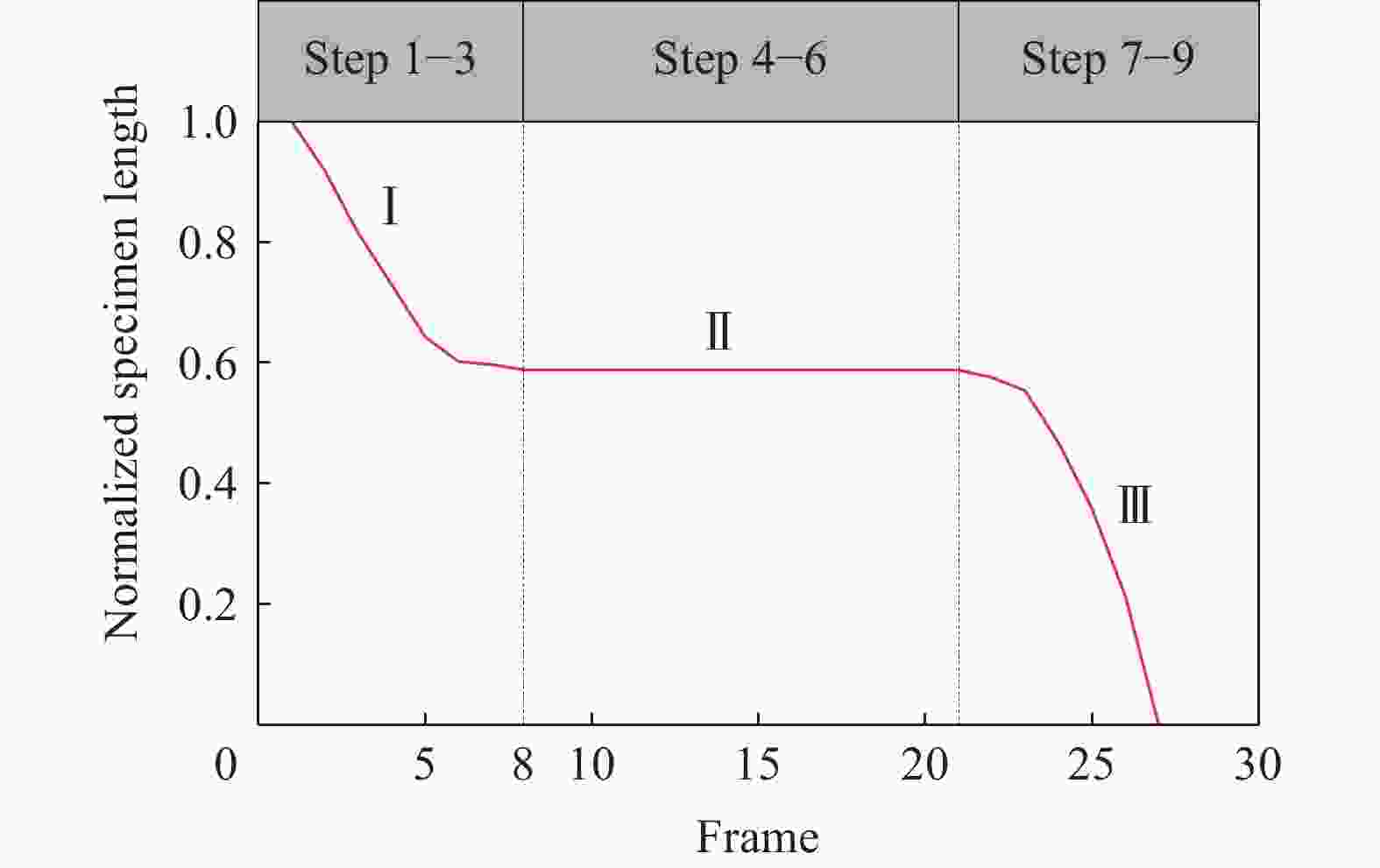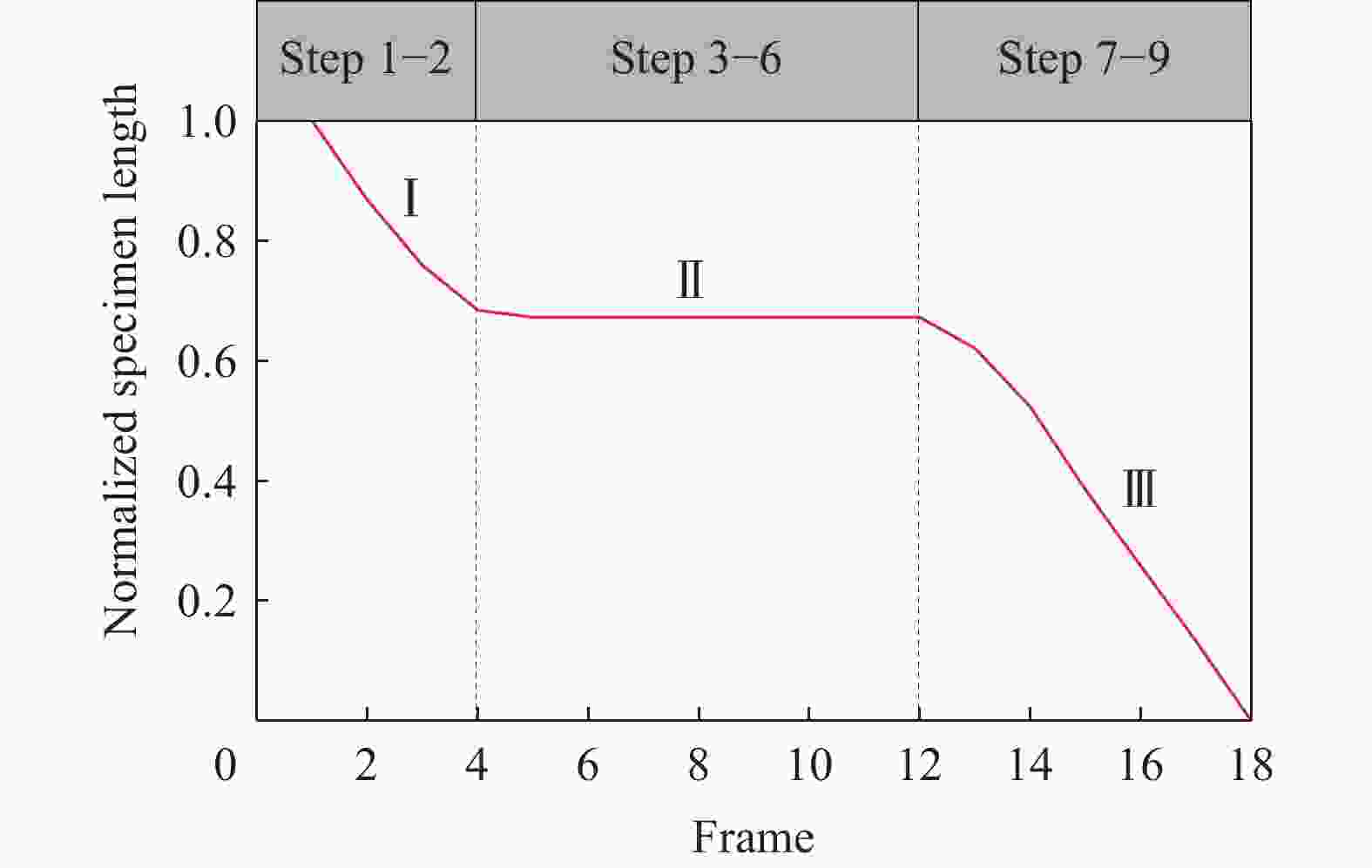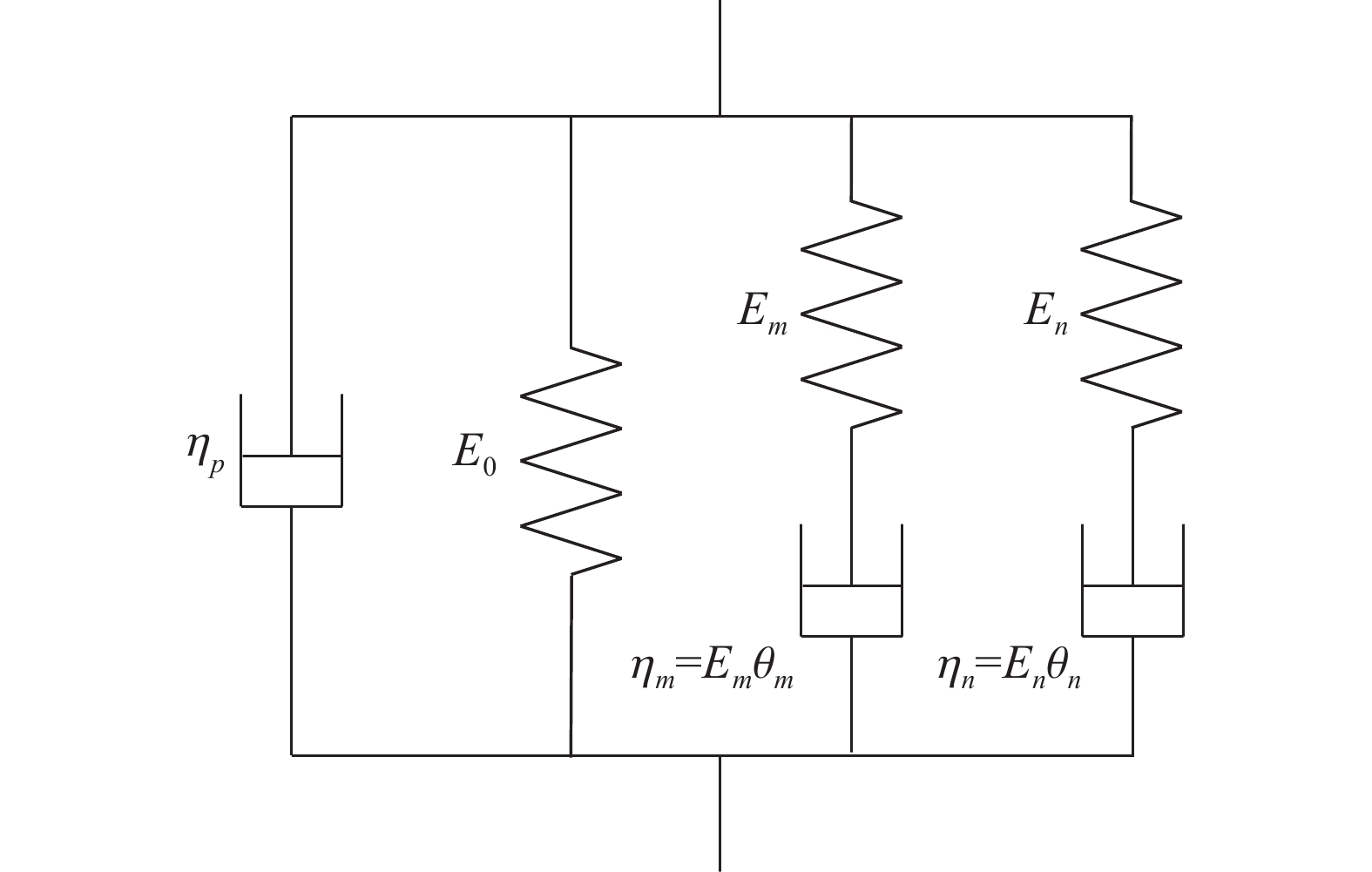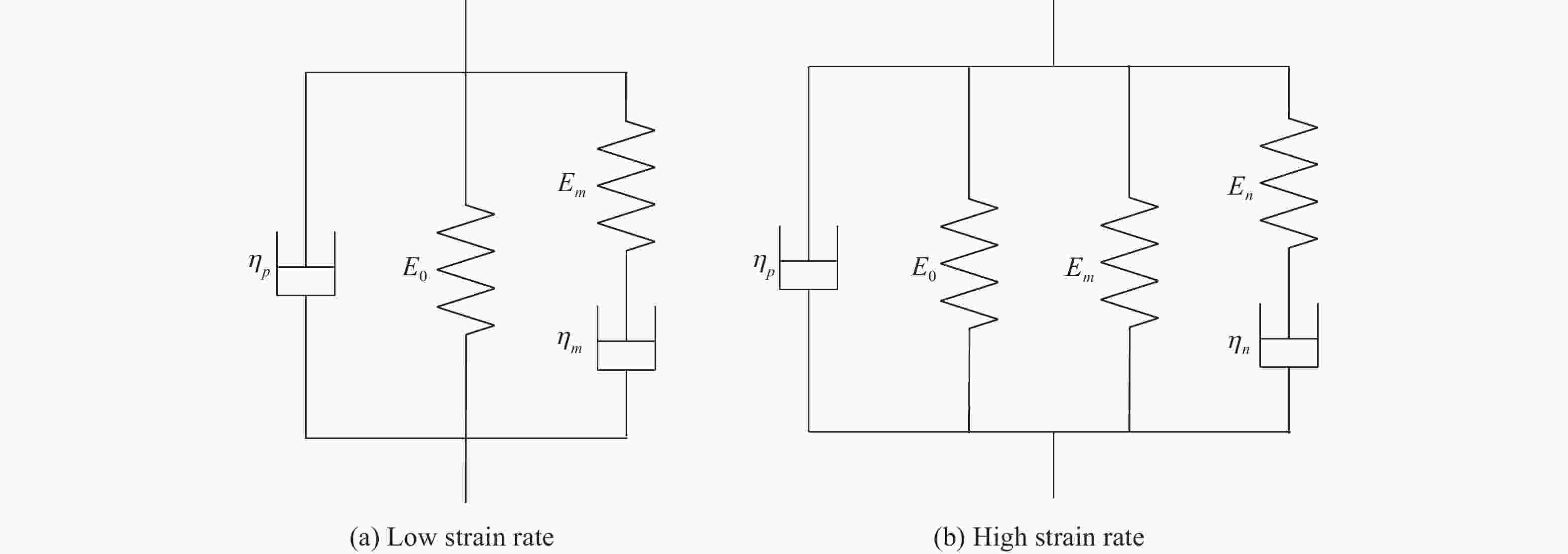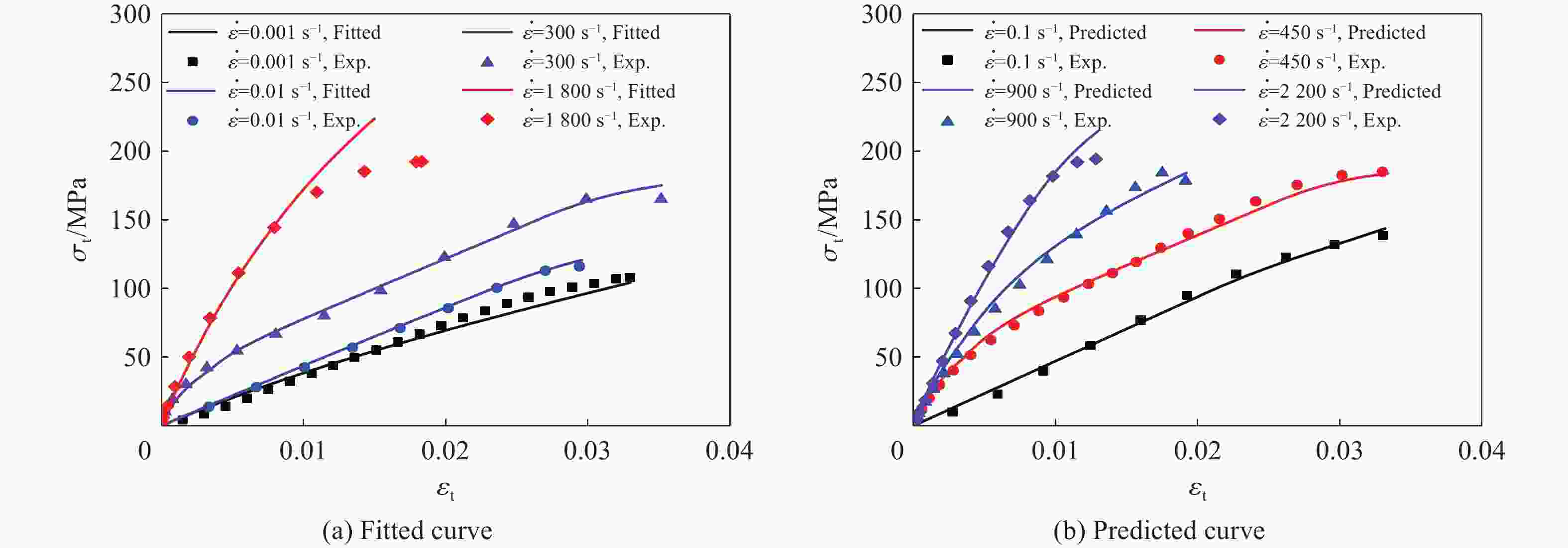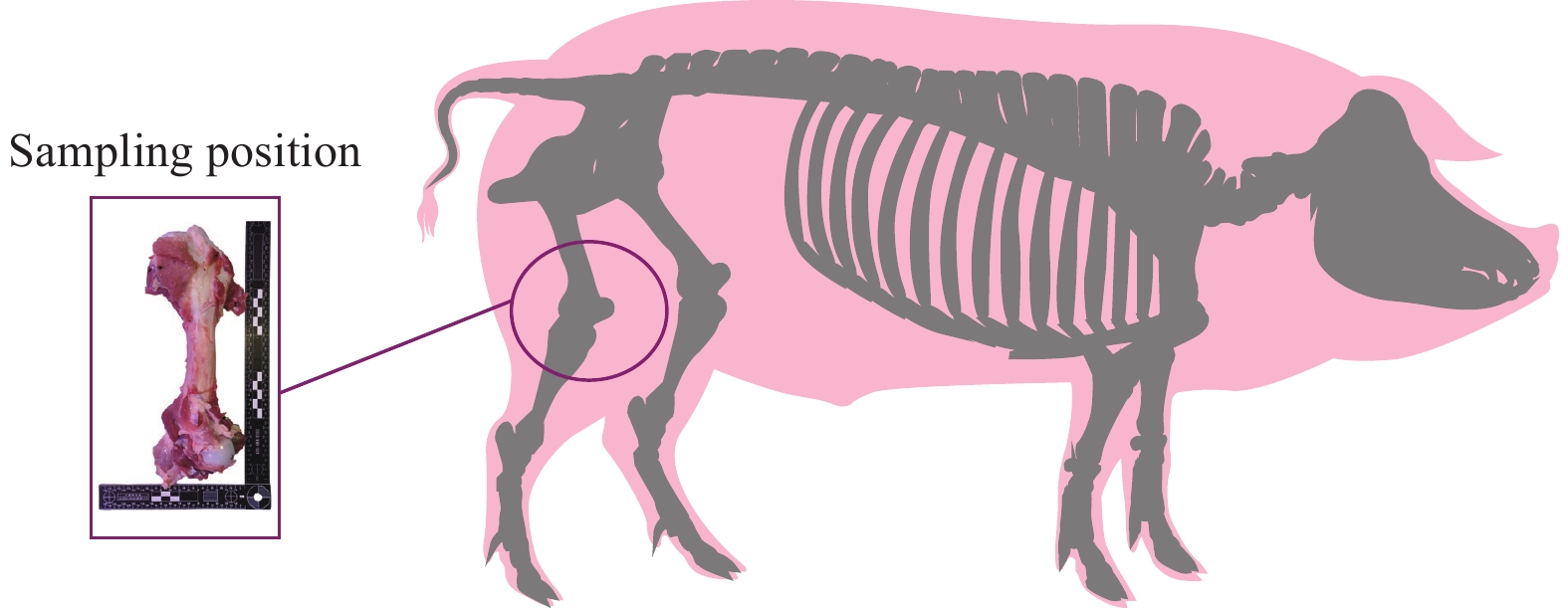Study on compressive mechanical tests and constitutive models of cortical bone under different strain rates
-
摘要: 皮质骨作为人体骨骼系统的重要组成部分,能有效分散与吸收外部冲击力,保护内部骨髓腔、周围软组织和器官不受损伤。为研究冲击载荷作用下皮质骨的力学响应,借助万能材料试验机和分离式霍普金森压杆装置对猪皮质骨开展了不同应变率下的准静态与动态压缩实验。采用超景深三维显微系统和数字图像相关技术观察了皮质骨的压缩形变特征,利用含损伤的黏弹性本构模型对实验数据进行了拟合,确定了模型中的本构参数。结果表明,皮质骨在压缩过程中表现为骨质裂纹的产生与扩展,其力学性能具有明显的应变率相关性,弹性模量、屈服应力和压缩强度随应变率的增大而显著提高。准静态加载时,应力-应变曲线包括弹性变形和塑性变形阶段;高应变率加载时,应力-应变曲线在应变小于0.2%时为弹性,随着压缩量的增加呈现高度的非线性,无显著塑性变形,表现出一定的黏弹性特征。实验曲线与本构模型理论曲线的对比表明,理论值与实验值的误差较小,本构模型能准确描述皮质骨在不同应变率下的压缩力学行为。研究成果可为人体冲击伤的救治与防护设计提供理论参考。Abstract: Cortical bone, as a critical component of the human skeletal system, effectively disperses and absorbs external impact forces, protecting the internal medullary cavity, surrounding soft tissues, and organs from damage. In order to investigate the mechanical response of cortical bone under impact loading, quasi-static and dynamic compression experiments were conducted on porcine cortical bone at varying strain rates using a universal material testing machine and a split Hopkinson pressure bar apparatus. The compression deformation characteristics of cortical bone were observed by employing ultra-depth three-dimensional microscopy and digital image correlation techniques. A viscoelastic damage constitutive model was applied to fit the experimental data, and the model parameters were determined. The results demonstrate that the compression process of cortical bone is characterized by the initiation and propagation of microcracks, and mechanical properties of the material exhibit significant strain-rate dependence. The elastic modulus, yield stress, and compressive strength increase significantly with increasing strain rates. Under quasi-static loading, the stress-strain curve consists of distinct elastic and plastic deformation stages. In contrast, under high-strain-rate loading, the stress-strain response remains purely elastic at strains below 0.2%, but transitions into a highly nonlinear regime with increasing compression. Notably, no significant plastic deformation occurs under dynamic loading, revealing pronounced viscoelastic behavior. Comparison between the experimental data and theoretical curves from the constitutive model shows good agreement, with minimal deviations between predicted and measured values. The model accurately captures the compressive mechanical behavior of cortical bone across different strain rates. This study provides theoretical references for the treatment of impact-induced human injuries and protective designs.
-
Key words:
- cortical bone /
- impulsive load /
- viscoelastic /
- strain rate /
- constitutive model
-
表 1 压杆材料参数
Table 1. Material parameters of the pressure bar
材料 ρ0/(kg·m−3) E0/GPa c0/(m·s−1) I0/(kg·m−2·s−1) LC4硬铝合金 2.7×103 70 5.05×103 1.36×107 表 2 含损伤的黏弹性本构模型参数
Table 2. Parameters of the viscoelastic constitutive model with damage
D0 a b E0 /MPa ηp /(MPa·s) Em /MPa θm /s En /MPa θn /s m n p 1.2 1.1 0.7 2.3×103 0.001 2.1×103 5.7×10−6 2.0×104 14.8 0.99 1.0 0.99 表 3 拟合决定系数
$R^2 $ Table 3. Coefficient of determination
$R^2 $ $ \dot \varepsilon $/s−1 0.001 0.01 0.1 300 450 900 2200 R2 0.997 0.999 0.982 0.996 0.990 0.984 0.998 -
[1] COWIN S C. Bone mechanics handbook [M]. 2nd ed. Boca Raton: CRC Press, 2001: 1–4. DOI: 10.1201/b14263. [2] 张冠军, 邓先攀, 杨洁, 等. 皮质骨试样制备及其材料参数识别方法研究 [J]. 中国生物医学工程学报, 2017, 36(1): 75–82. DOI: 10.3969/j.issn.0258-8021.2017.01.010.ZHANG G J, DENG X P, YANG J, et al. A study on cortical bone specimens preparation and method to calculate the mechanical parameters [J]. Chinese Journal of Biomedical Engineering, 2017, 36(1): 75–82. DOI: 10.3969/j.issn.0258-8021.2017.01.010. [3] 李昕, 陈利, 张庆明, 等. 猪下肢骨骼的冲击压缩试验研究 [J]. 中国测试, 2016, 42(10): 63–67. DOI: 10.11857/j.issn.1674-5124.2016.10.012.LI X, CHEN L, ZHANG Q M, et al. Research on shock compression test of pig’s lower limb [J]. China Measurement & Test, 2016, 42(10): 63–67. DOI: 10.11857/j.issn.1674-5124.2016.10.012. [4] SANBORN B, FOSTER M. Effect of loading rate and orientation on the compressive response of human cortical bone [R]. Army Research Laboratory Technical Report, 2008. ARL-TR-6907. [5] KULIN R M, JIANG F C, VECCHIO K S. Loading rate effects on the R-curve behavior of cortical bone [J]. Acta Biomaterialia, 2011, 7(2): 724–732. DOI: 10.1016/j.actbio.2010.09.027. [6] 安兵兵, 李凯, 张东升. 皮质骨断裂力学行为的实验研究 [J]. 力学学报, 2010, 42(6): 1164–1171. DOI: 10.6052/0459-1879-2010-6-lxxb2009-604.AN B B, LI K, ZHANG D S. An experimental approach on fracture behavior of cortical bones [J]. Chinese Journal of Theoretical and Applied Mechanics, 2010, 42(6): 1164–1171. DOI: 10.6052/0459-1879-2010-6-lxxb2009-604. [7] 曾煊. 适用于碰撞人体有限元模型的下肢皮质骨材料率变性实验研究 [D]. 重庆: 重庆理工大学, 2019: 9–53.ZENG X. Experiment research on strain rate dependency of material properties of lower limb cortical bone applied for human safety finite element models [D]. Chongqing: Chongqing University of Technology, 2019: 9–53. [8] 雷建银. 不同工况下骨盆的生物力学响应研究 [D]. 太原: 太原理工大学, 2018: 69–85.LEI J Y. The biomechanical response research of pelvis under different working conditions [D]. Taiyuan: Taiyuan University of Technology, 2018: 69–85. [9] 顾红跃. 长骨力学特性沿轴向和周向的变化研究 [D]. 长沙: 湖南大学, 2021: 33–45. DOI: 10.27135/d.cnki.ghudu.2021.003644.GU H Y. Study on axial and circumferential variations of mechanical properties of long bone [D]. Changsha: Hunan University, 2021: 33–45. DOI: 10.27135/d.cnki.ghudu.2021.003644. [10] 翟乃川. 皮质骨微观结构和骨矿物密度对其力学特性的影响研究 [D]. 长沙: 湖南大学, 2018: 19–32.ZHAI N C. Effect of microstructure and bone mineral density on mechanical properties of cortical bone [D]. Changsha: Hunan University, 2018: 19–32. [11] 蔡志华, 周培月, 汪剑辉, 等. 骨组织准静态和动态压缩试验与本构模型研究 [J]. 实验力学, 2021, 36(3): 389–396. DOI: 10.7520/1001-4888-21-033.CAI Z H, ZHOU P Y, WANG J H, et al. Study on quasi-static and dynamic compression tests and constitutive model of bone tissue [J]. Journal of Experimental Mechanics, 2021, 36(3): 389–396. DOI: 10.7520/1001-4888-21-033. [12] 张佃元, 于晨, 郝文勇, 等. 爆炸冲击载荷下猪肺部的损伤特性 [J]. 爆炸与冲击, 2024, 44(12): 121433. DOI: 10.11883/bzycj-2024-0262.ZHANG D Y, YU C, HAO W Y, et al. Injury properties of porcine lung under blast load [J]. Explosion and Shock Waves, 2024, 44(12): 121433. DOI: 10.11883/bzycj-2024-0262. [13] LIU K, WU Z L, REN H L, et al. Strain rate sensitive compressive response of gelatine: experimental and constitutive analysis [J]. Polymer Testing, 2017, 64: 254–266. DOI: 10.1016/j.polymertesting.2017.09.008. [14] 余同希, 邱信明. 冲击动力学 [M]. 北京: 清华大学出版社, 2011: 39–40.YU T X, QIU X M. Introduction to impact dynamics [M]. Beijing: Tsinghua University Press, 2011: 39–40. [15] 李国和, 王敏杰. 淬硬45钢在高温、高应变率下的动态力学性能及本构关系 [J]. 爆炸与冲击, 2010, 30(4): 433–438. DOI: 10.11883/1001-1455(2010)04-0433-06.LI G H, WANG M J. Dynamic mechanical properties and constitutive relationship of hardened steel (45HRC) under high temperature and high strain rate [J]. Explosion and Shock Waves, 2010, 30(4): 433–438. DOI: 10.11883/1001-1455(2010)04-0433-06. [16] 王尚城, 王冬梅, 汪方, 等. 人骨拉伸和压缩力学的性能测试 [J]. 中国组织工程研究, 2013, 17(7): 1180–1184. DOI: 10.3969/.issn.2095-4344.2013.07.008.WANG S C, WANG D M, WANG F, et al. Tensile and compressive mechanical property of human bone tissue [J]. Chinese Journal of Tissue Engineering Research, 2013, 17(7): 1180–1184. DOI: 10.3969/.issn.2095-4344.2013.07.008. [17] CLOETE T J, PAUL G, ISMAIL E B. Hopkinson bar techniques for the intermediate strain rate testing of bovine cortical bone [J]. Philosophical Transactions of the Royal Society A: Mathematical, Physical and Engineering Sciences, 2014, 372(2015): 20130210. DOI: 10.1098/rsta.2013.0210. [18] 王礼立, 董新龙, 孙紫建. 高应变率下计及损伤演化的材料动态本构行为 [J]. 爆炸与冲击, 2006, 26(3): 193–198. DOI: 10.11883/1001-1455(2006)03-0193-06.WANG L L, DONG X L, SUN Z J. Dynamic constitutive behavior of materials at high strain rate taking account of damage evolution [J]. Explosion and Shock Waves, 2006, 26(3): 193–198. DOI: 10.11883/1001-1455(2006)03-0193-06. [19] 孙朝翔, 鞠玉涛, 郑亚, 等. 双基推进剂的高应变率力学特性及其含损伤ZWT本构 [J]. 爆炸与冲击, 2013, 33(5): 507–512. DOI: 10.11883/1001-1455(2013)05-0507-06.SUN C X, JU Y T, ZHENG Y, et al. Mechanical properties of double-base propellant at high strain rates and its damage-modified ZWT constitutive model [J]. Explosion and Shock Waves, 2013, 33(5): 507–512. DOI: 10.11883/1001-1455(2013)05-0507-06. [20] 王礼立. 爆炸/冲击动力学学习研究中的若干疑惑 [J]. 爆炸与冲击, 2021, 41(1): 011401. DOI: 10.11883/bzycj-2020-0415.WANG L L. Some doubts in studying explosion/impact dynamics [J]. Explosion and Shock Waves, 2021, 41(1): 011401. DOI: 10.11883/bzycj-2020-0415. -






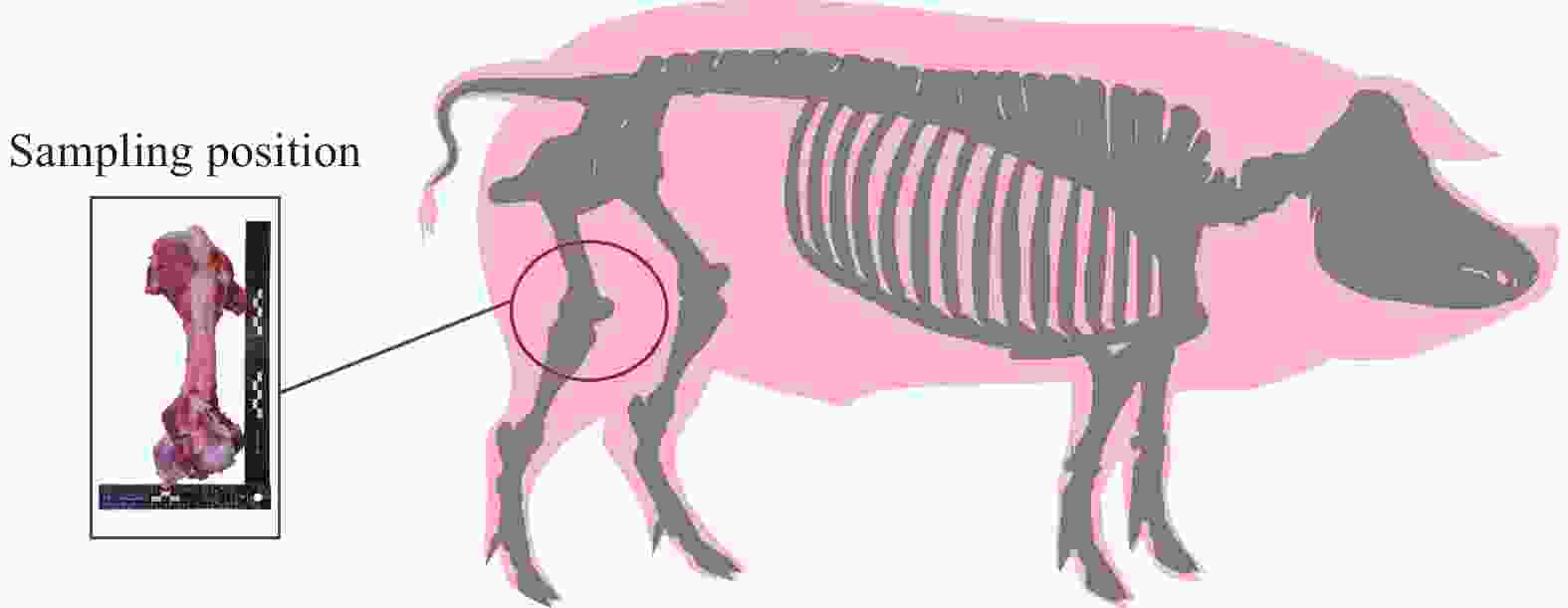
 下载:
下载:

